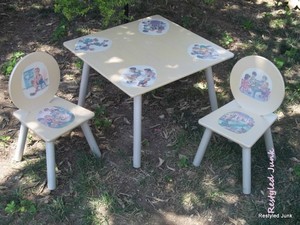While living in Europe, I had a chance to teach at an “international kindergarten.” Because the parents sent their children there to learn English, that was the main language used, but there were nearly a dozen others spoken. Here are some teaching methods I learned that can work well whether you’re working with a class of boisterous kindergarteners or your helping your own children learn a foreign language.
Dr. Seuss was right
Think you can’t get your kids to enjoy rote memory tasks? You might be surprised how fast a kid will memorize something whent the rhythm and subject matter are interesting. Silly, rhyming stories and poems such as the ones by Dr. Seuss and Shel Silverstein are loved by almost all kids. Jokes also work well, but one thing I found went over especially well was tongue twisters. A lot of kids like to memorize them so they can retell them to friends.
Active language games
If you’re teaching a class, keep in mind that not all the children will have the same language skills. You may have to carefully explain or demonstrate game rules to the ones who don’t understand so well. Any common kids game that involves listening to instructions, such as “Simon says,” makes good language practice. Another good activity is to give the kids objects like colored blocks and call out instructions like “put a red block on top of a blue block.” You can also let each child give instructions to the class.
If you’re in the mood for a little running around, try a word-list race. Divide the kids into teams and line them up at the board. Have each of the first children in line write a word from a certain category (such as words starting with “L,” name of objects in the classroom, etc) and then hand the chalk to the next person in line, and so on. Whichever team writes the longest list within the time limit wins. For a calmer activity, “rumor” or “whispers” is a good choice. The kids stand in a circle, one person whispers a sentence into the next person’s ear, and that person must repeat the exact same thing to the following person. The last person says the sentence out loud and it’s usually something very different from what the first said.
Interactive story telling
As with any story telling, it’s important that there be some physical activity to keep the kids from getting restless. For those kids who learn best by doing, acting out part of the story helps re-inforce the meaning of the words, too. With stories in a language the children don’t know well, you may want to keep your “acting out the story” to single words like “surprised” or “jump.” If you’re telling a story the children know well, try mis-telling a part of a story and let the kids “correct” you. Just make sure to ask the quieter kids, too, or they may never get a chance to speak.
Visual aids
Most kids, if given colored pencils, crayons, or markers, will come up with at least something. Not to mention “free drawing time” is a good way to get a few minutes quiet. To get some language practice in, have the children label five to 10 things on the picture (or a seperate piece of paper, if they don’t want to “ruin” their picture). Most little kids aren’t shy about asking for a word they don’t know, so this is a good vocabulary builder, too. Another good game is to ask the kids to illustrate a noun like “fun” or “summer.
Grammar?
With children under 10, you’re really not doing much serious grammar teaching. That doesn’t mean you should let them get away with using bad grammar, but the serious grammar teaching usually comes later in writing classes. You can get in a little now, though. Mad Lib-type writing games can work for at least teaching some grammar vocabulary because you need to know what a “noun,” “adjective,” and so on are in order to complete the story. If your children don’t have such advanced active vocabularies, try giving them lists of random words organized by parts of speech so they can pick from the list.
Young children really can learn language quickly, but you can help them out with a few well-chosen learning activities. By combining attention-holding games with language instruction, you can help your class or your own kids learn a foreign language more easily.






